5HT-2Ar Agonists VS NMDAr antagonist
LSD, DMT, Magic Mushrooms, Mescaline, and more are considered 'classic' or 'serotonergic' psychedelics. This is because these drugs bind to the serotonin receptor (5HT-2A). But there is another group of drugs that are often referred to as psychedelics, most commonly MDMA/MOLLY or Ketamine, and these drugs produce their effects on the brain by blocking to NDMA receptor binding, a completely different mechanism of action. Although both kinds of psychedelics share many of the same phenomenological effects and features, these are very different types of drugs and there are important distinctions to be made. I will highlight a few of these below.
1. Model Psychosis - Animal models of schizophrenia
.Both 5-HT2Ar agonists and NDMAr antagonists share some of the same features seen in psychosis. Thus, they have been used to model psychosis in animals in the neuroscientific research of schizophrenia, bipolar disorder, etc. While NMDAr agonists are still used in this research to this day, the use of serotonergic psychedelics has been abandoned for psychosis research because of the stark neural differences between these states. For example, 5HT-2Ar agonists mostly recreate the positive symptoms of schizophrenia (like hallucinations) while NMDAr blockade effectively recreate the negative symptoms as well. Examples of this are, alterations to body image, disorganization of thought, negativism, emotional withdrawal, apathy, and motor retardation.
2. So, can psychedelics trigger psychosis?
A long standing question in the field of psychedelics and psychosis remains unanswered. Can psychedelics "trigger" psychosis? Unfortunately, there is still no clear answer to this question but because of the contrasting effects on brain activity observed in the serotonergic psychedelic state and psychosis, research has moved away from focusing on this question. In fact, much of the research published on the potential negative effects of serotonergic psychedelics and psychosis is outdated. In regard to NDMAr antagonists however, the threat of psychosis seems more real. This is because NDMAr antagonists like ketamine are dissociatives, and also because NDMAr antagonists actually produce some of the neurological effects that potentially underlie schizophrenia (ex. impairing gamma oscillations).
3. Risks, overdosing, and addiction
So what about overdosing? While the threat of overdosing on serotonergic psychedelics is very rare, it still may be possible. Stories of 'overdosing' on magic mushrooms or LSD make for very uncomfortable, but still beneficial, transformative experiences that have relatively little negative health effects (heart rate of blood pressure can be effects especially for those with pre-existing conditions which could lead to cardiac arrest). DMT is believed to be lethal at high enough doses but more research must be conducted in order to have a clear answer. NMDAr antagonists are much more dangerous. In fact, ketamine overdose can lead to coma or death. An MDMA overdose, because it is a stimulant, can cause high blood pressure, a rapid heart rate, and seizures. Taking MDMA while exercising – for example, dancing for a long time in a hot room – has caused dehydration and dangerously high body temperature, even death.
What about addiction? While serotonergic psychedelics have been implemented in treating drug addiction, various NMDAr antagonists are known to be abused and depended on at much higher rates. With that being said, serotonergic psychedelics can also be abused and potentially depended on.
4. Therapeutic benefits
MDMA users may have higher rates of anxiety and depression than non-users. This is because the chemicals in the brain, specifically, serotonin, become unbalanced after NMDAr agonist use because of how they act on the brain. This is not observed in serotonergic psychedelic because of how they act on their receptors.
With all of that being said, it may seem like I am advocating for serotonergic psychedelics and against NMDAr antagonists, and that is not the case. Outside of a controlled setting, the risks of NDMAr antagonists use are much higher than that of recreational serotonergic psychedelic use but both kinds of drugs have tremendous positive effects when used safely and in the right environment. In fact MDMA and ketamine assisted therapy, much like LSD and magic mushrooms, has shown incredible promise for the treatment of depression, anxiety, and PTSD.
